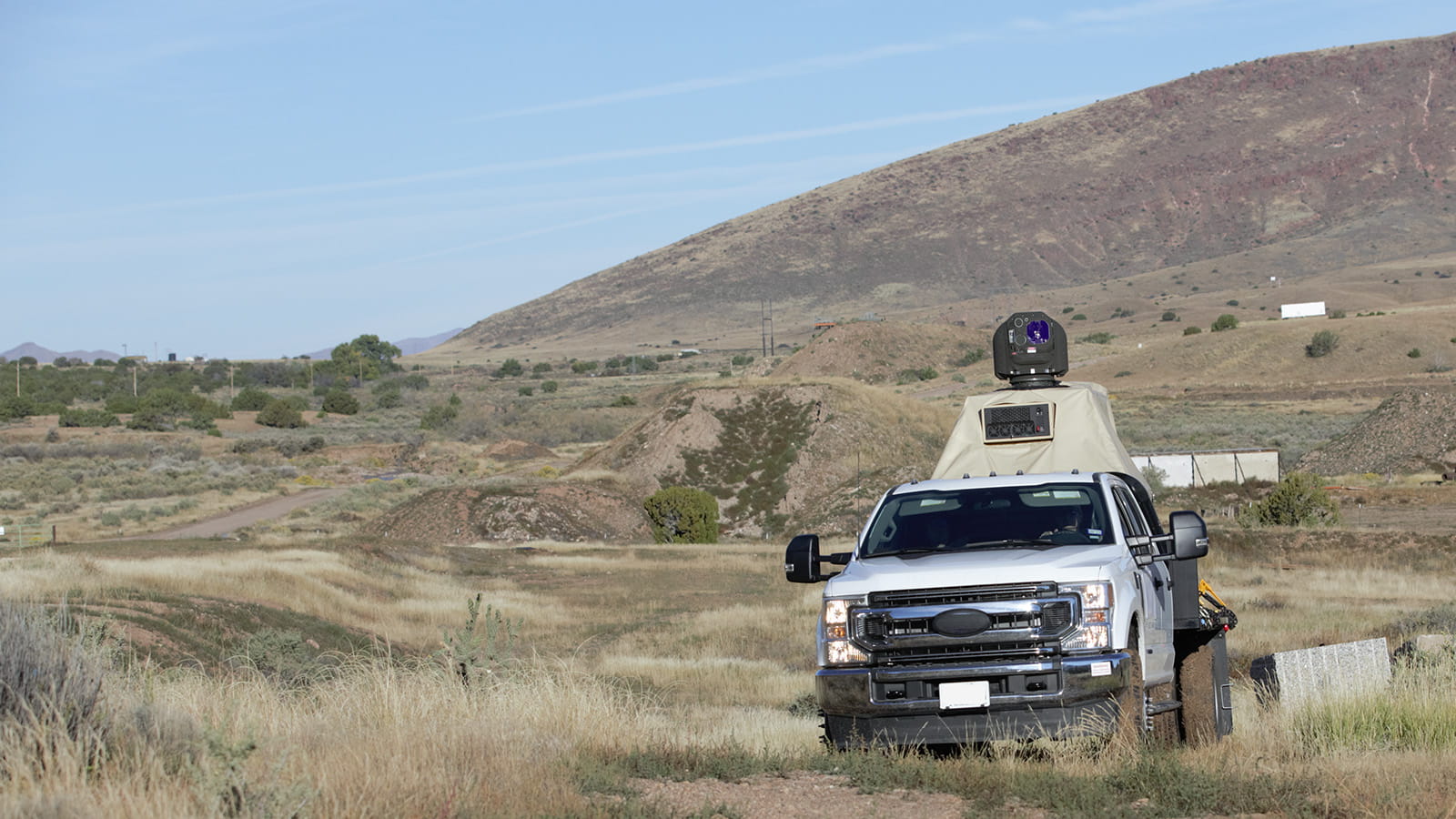TIM MARTIN

BELFAST — In anticipation of a 2025 solicitation from the United Kingdom for a production ready high energy laser weapon to counter drones, Raytheon UK is pitching itself as the “most mature” solution available.
The manufacturer plans on receiving a 15Kw high energy laser from its parent company in the US this quarter, the company told Breaking Defense, which will then undergo integration testing. The goal is to have the system up and running ahead of a “user experience trial” scheduled for the end of 2024, as part of the UK’s Land Demonstrator Programme.
“I think people perhaps underestimate what we are bringing into the UK and what we’ll be demonstrating as part of the user experience trial is production ready, it’s not a science project as they [laser weapons] have been in the past,” Alex Rose-Parfitt, engineering director at Raytheon UK, told Breaking Defense.
“When they eventually put out requirements for the purchase of the end system [expected in 2025], it will be based on what they’ve learned in this user experience trial.”
Once the system arrives in the UK, it will be fitted on a Wolfhound armored vehicle “with a radar and C2 system” before receiving a system verification check prior to delivery, Raytheon added in a statement.
Wolfhound is a six-wheeled version of the heavily armored Mastiff patrol vehicle and forms part of the British Army’s Tactical Support Vehicles (TSV) group, which mainly carry combat supplies, including ammunition and water.
Raytheon says it has shipped eight laser systems for testing between the US Army and US Air Force, including integration on Stryker combat vehicles under the former’s Directed Energy Maneuver-Short Range Air Defense (DE M-SHORAD) program.
The system due to take part in the user experience trial was involved in multiple field tests, “including in difficult weather conditions with extreme heat, cold, rain, sleet and snow,” during a four-day live fire exercise in the US, where it “successfully acquired, tracked, targeted and destroyed dozens of drone targets in short-range attack, swarm attack and long-range threat scenarios,” according to Raytheon company statement in September.
Raytheon UK was first contracted by the UK MoD to develop and install a high energy laser on a Wolfhound vehicle in 2021.
Rose-Parfitt also said that future requirements for London are likely to focus on “delivery on target” laser power output and maneuverability.
“A whole host of [other] requirements will play into it obviously … our system is the most mature one out there … we are in a good competitive position,” he added.
Nicole Roberts, program manager for high energy laser weapons at Raytheon UK, said that the UK MoD has also announced a “next phase of funding” aligned to moving beyond the user experience trial and toward acquisition of a production ready system.
“I think once we get towards the end of next year, and they [the MoD] really do have the system in their hands, that will to be the timeframe where they’re really able to nail down what those [production] requirements are,” she explained.
High energy laser weapon systems have been generally troubled by power capacity and beam stabilization issues. Those challenges have been overcome in Raytheon’s case largely by “maturity of technology” over the last decade and development of the company’s Multispectral Targeting System (MTS) sensor package, according to Rose-Parfitt.
“If you think of what the MTS dome was developed for, it is usually installed on an airborne platform to observe significant and different moving targets and is highly stabilized … and all we are doing is putting the laser through it, that’s our way round the stabilization issue,” he explained.
No comments:
Post a Comment